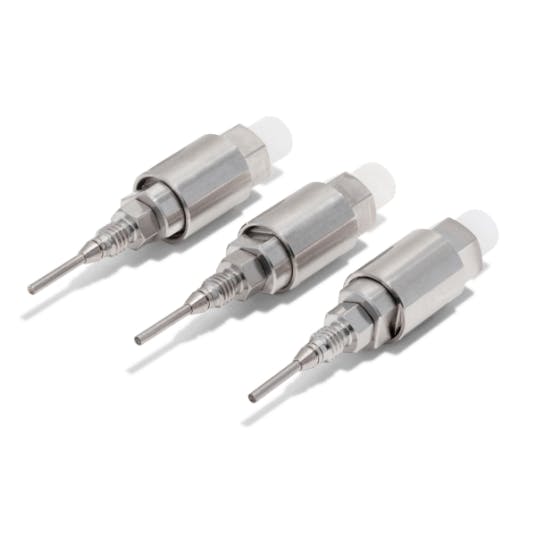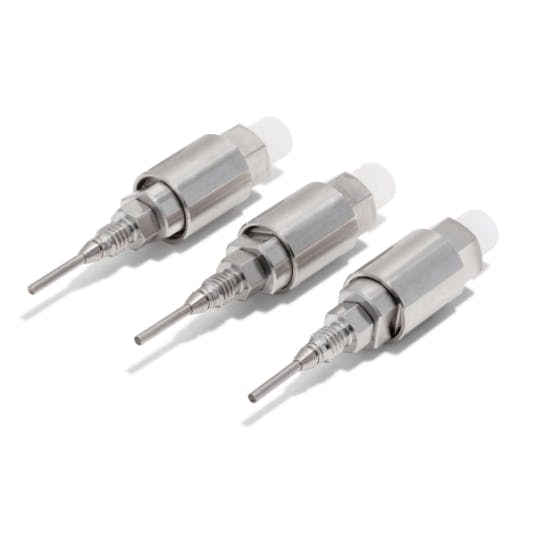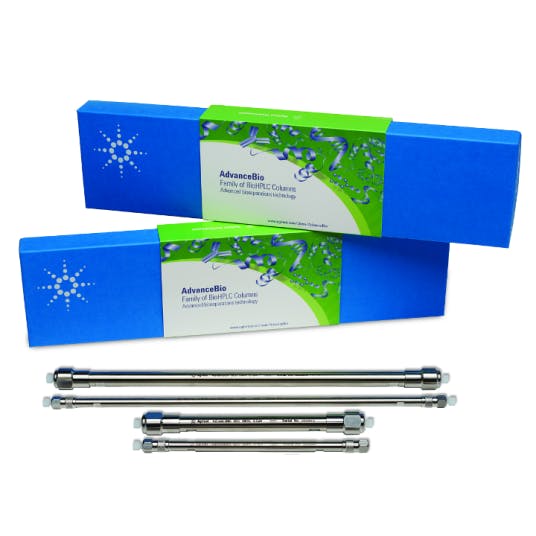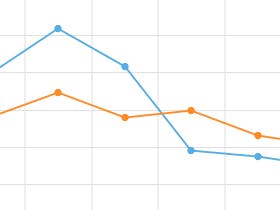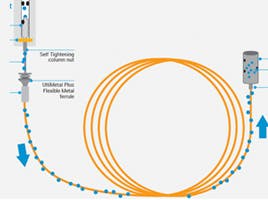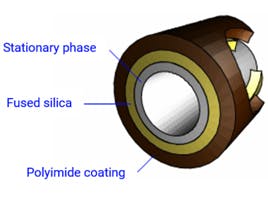
29 Jul 2022
Can you afford to be loyal to your column?
By Clare Pashley
Many chromatographers use a specific column simply because it is what they have always used. It might not be the newest technology or produce the fastest methods, but it has worked for them in the past. Therefore, they haven’t given much thought to what else might be available.
There are legitimate reasons to not update a column, for example, if you are running a validated method that would require months of revalidation or have been given a customer method to replicate that gives you minimal column choice. However, in many cases, the reasons that column chemistries or newer technologies for their analytical method development haven't been considered are less than sound. For instance:
- This manufacturer has always been good to us in the past
- We had a bad experience trying a different column in the past
- This column has always worked for us previously
- It’s just the one we’ve always used
- We get a good discount on this column
- I only use my HPLC/GC instrument manufacturer’s columns because they have a column ID tag
- I saw a paper that used this column for this method so it must be the best option
Whilst there is certainly something to be said for “if it isn’t broke don’t fix it”, what we're interested in is whether you can afford to be loyal to a particular column or manufacturer.
At Element, we supply columns from many different manufacturers and provide an independent recommendation on whether an alternative column might offer you method improvements or simply save you some money. These are some examples of how our technical and commercial teams have supported our customers and been able to work with them to offer significant efficiency or cost improvements.
Example 1: method improvements using newer column technologies
A few years ago, the Element technical team supported a company based in Yorkshire that had developed a method on their trusty “go-to” column. In their case, this was a fully porous phenyl C18 column (5µm x 250 mm x 4.6 mm). The customer approached us as they were having some difficulty detecting two low-intensity impurities in the sample. Upon looking at the method we were able to recommend some method changes and suggest they move to a C18 column with newer particle technology. Superficially porous particles (SPPs) can often offer increased column efficiency (i.e. narrower peaks) compared with standard fully porous particles (Figure 1), which has been discussed in depth in previous Element blog articles. The more efficient column, together with a more appropriate column chemistry, allowed for a shorter (and therefore, less expensive) column to be used. Along with some method tweaks, these changes meant we were able to improve the method sensitivity whilst simultaneously reducing the run time to just 15 minutes! (Figure 2)

50 mm x 2.1 mm columns
Mobile phase:
A: water/0.1 % TFA
B: acetonitrile/0.1 % TFA
Gradient: 5-50 % B in 5 min
Flow rate: 1 mL/min
Temperature: 50 °C
Injection: 2 µL Detection: 214 nm
Peak identities: A) Arg-vasopressine (25 µg/mL) B) Peptide 1 (20 µg/mL) C) Peptide 2 (10 µg/mL) D) Insulin (30 µg/mL) E) Peptide 3 (30 µg/mL) F) Peptide 4 (50 µg/mL)
Figure 1: Comparison of 2.7 µm superficially porous particle columns with a 1.7 µm fully porous particle HPLC column [Figure taken directly from Hayes et al; J.Chromatogr A (2014)1]

Figure 2: Overlay of the chromatograms for a customer method involving 6 peaks of interest (note the two low intensity impurity peaks aren’t visible on this scale)
BLUE: Solid Core C18 4µm 100mm x 3.0mm column – runtime 15min
BLACK: Fully Pourous Phenyl C18 5µm 250mm x 4.6mm column – runtime 40min
Example 2: unexpected method improvements
In another example, we were supporting a customer in the West Midlands. Their “go-to” column for a particular method was a fully porous 50 mm x 2.1 mm x 1.7 µm column with a charged surface chemistry. Agilent had recently launched their Poroshell CS-C18 column, and we believed this could offer the customer some benefits due to it being based on a superficially porous particle rather than a standard fully porous particle. To allow the customer to trial the new column risk-free we offered it on a “buy and try” basis to evaluate against their current column. The Poroshell CS-C18 (50 mm x 2.1 mm x 2.7 µm) received great feedback. It yielded much lower back pressures, due to the larger particle size and SPP, which allowed the customer more flexibility with flow rates and mobile phase selection. In addition, they were able to get down to lower levels of quantitation compared with their existing column. The lower level of sensitivity was of great value to the customer since they were about to undertake a project which required a target LLOQ of 10 pg/mL, previously unattainable for them but now possible with the newer column technology.
Example 3: Increased column longevity
One of our Scottish CDMO customers was happy with the size exclusion chromatography (SEC) column that they were using for monoclonal antibody analysis. However, when a new improved Agilent AdvanceBio SEC option became available (Figure 3), we notified them that they may want to evaluate this as it could offer improved results and increased column longevity. Due to SEC columns requiring a large pore volume, the columns tend to be quite sensitive to pressure changes and this can greatly reduce their lifetimes. The newer column had improved technology meaning it was much more resistant to such pressure changes and therefore despite seeing an increase in sample throughput for the method, they now only require 2-4 columns per year (~£2-4k) compared with the 4-8 columns (£3.5 - £7k) per year that they had used previously.
AdvanceBio SEC 120 Å, 1.9 µm columns showed less than a 10% drop in uridine number over 550 injections, confirming excellent mechanical stability.
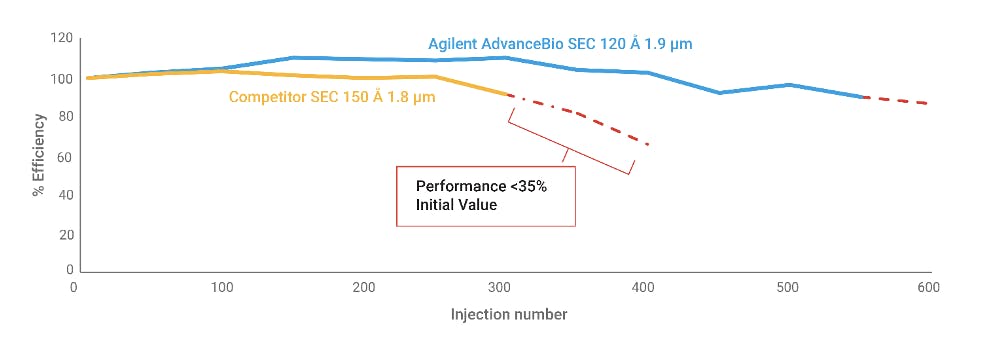
Instrument: Agilent 1260 Infinity II Bio-inert LC system
Column: 4.6 x 300 mm
Eluent: 100 mM phosphate, pH 6.8
Flow rate: 0.30mL/min
Temperature: 25°C
Detection: UV, 280 nm
Sample: BioRad protein mix and uridine (stop flow every 50 injections)
Figure 3: Comparison of column efficiency of the Agilent AdvanceBio SEC 120 Å, 1.9 µm column compared to a competitor SEC 150 Å, 1.8 µm. Taken from Agilent brochure [2]
Example 4: GC column cost savings
It isn’t only the HPLC method where it can pay to consider alternative column suppliers or phases. We worked with a government research institute who were particularly cost-sensitive. So much so that they only ever purchased their GC columns from a well-known supplier when they were running 3 for 2 offers. As an independent distributor, we were able to offer them equivalent GC columns from an alternative supplier, but with a saving of an additional 10 % on each column they were currently purchasing on a special offer. Now they can order as and when they need and still make a saving!
Example 5: Method consolidation
In this final example, we had been speaking with a customer who had been having trouble separating a few of their compounds and was keen to consolidate 3 purity methods onto a single column phase and dimension. Notably, there were two analytes that they had never been able to fully resolve over the years despite trying a number of phases. We worked with the customer to get a better understanding of what method development had already been tried, for example, they mentioned they had seen an improvement moving from a Cyano phase to a PFP phase. Given that the troublesome compounds had multiple ring structures and keeping in mind the other analytes that needed to be analysed we suspected a Biphenyl phase would be able to offer increased discrimination of the compounds to facilitate an improved separation. This was due to the additional ring group and resulting increased density of ring structures on the stationary phase that can show an improved separation of multiple ring compounds. We were able to provide this column from our loan stock for the customer to evaluate. Much to their surprise the new phase, with some method development suggestions from our technical team, gave the best chromatography they had achieved and allowed full resolution for their troublesome pair. This allowed them to improve their method and consolidate the three purity methods onto a single column as they had wished.
Summary
I have highlighted some of the ways that our technical and commercial teams can work with you to find the best column for your needs. Hopefully, I have shown there are significant cost savings and technical improvements to being open-minded about column selection. At Element, we are an independent distributor with our own in-house technical team. As such, we are uniquely placed to support our customers in finding the best and most cost-effective solution for their method development needs.
References
1. Hayes R, Ahmed A, Edge T, Zhang H. Core-shell particles: preparation, fundamentals, and applications in high performance liquid chromatography. J Chromatogr A. 2014 Aug 29;1357:36-52. doi: 10.1016/j.chroma.2014.05.010. Epub 2014 May 9. PMID: 24856904.


